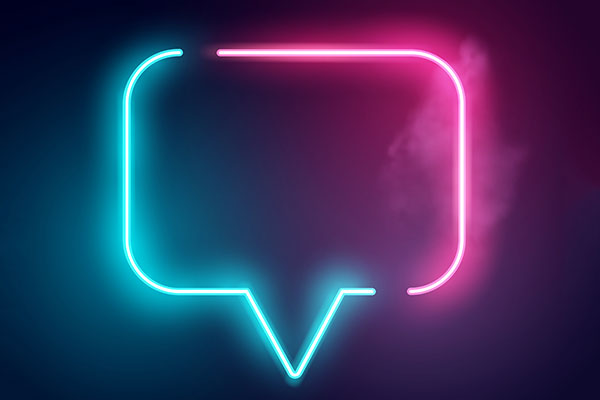How do we ensure that technological advances improve the learning experience?
Take yourself on a journey of the imagination. Pretend that you are a student traveling through the human history of ‘technology’ in education. Early on, as a young cave dweller, you might be grunted at, flashed a few hand signals, maybe taken on a hunt to witness the take down of a wooly mammoth. A generation or two later, your mind is blown with the advent of cave paintings – perhaps 15,000 BC – and your hunting education goes ‘virtual’ and no longer requires the danger of a field trip.
You are hungry to learn – and the new technology feeds your appetite!
Fast forward to Sumer in the 4th century BC and you enjoy written language on clay tablets in pictograms and cuneiforms – your world continues to expand. A few thousand years later, in China, Cai Lun’s invention of paper changes your memorization requirements. Moving on to Ancient Greece and Rome, you now have access to incredible storytelling, myths, and legends - brought to you in books and journals written by hand by scribes.
What is amazing about these advances in “technology” is that each one improves your learning experience by increasing your access to sensory stimulations. student – with each one expanding the size and reach of your classroom. Studying in Ancient Greece with Aristotle, you have a much richer experience than your prehistoric counterpart who only has access to cave paintings.
You are amazed and grateful for the access you have to new technology.
As we move forward in our thought experiment, past the magnificent texts - illuminated by monks – we can now imagine the introduction of the Magin Catacoprica - or “magic lantern” in the mid 1600’s – an early device to project images from slides. As a student, you can now see pictures of anatomy, geography – the first virtual field trip. Move ahead to the early 1800s when James Pillans invents the blackboard in Scotland. The early 1900’s introduces you, as a student, to the film projector, then moving pictures, and radio. With each successive invention, the walls of the classroom continue to shrink.
While the invention of headphones, personal computers, and CDROMs all have a dramatic influence, your world as a student literally explodes with the rise of the internet. All human knowledge is now literally at your fingertips. Build on that the worlds of augmented and virtual reality to literally transform your universe. As a student in the 21st century, you can now travel the universe in your pursuit of a grand education.
You feel so fortunate to have access to a wealth of resources…
While you’re in the mindset, relishing in the modern advances - comparing your virtual worlds to the Paleolithic cave painting education – consider whether or not there is something missing in the human to human aspect – do the grunts and hand signals of your cave dweller teacher actually make a difference? Does the opportunity to ask a question of another human help you learn? – or is the virtual world – the world of text, tweet, or IMs – sufficient to carry your learning forward?
Rather than being used to replace the human student-teacher experience, technology should augment it. There are dozens of examples of this – from Smartboards to Skype in the Classroom – there are examples of how technology breaks down the walls of the classroom while maintaining a human connection.
You have unprecedented access to the worlds’ resources.
Skype in the Classroom, for example, enables educators to invite guest speakers – scientists and authors, musicians and engineers – to join their classroom virtually to interact with students – or to use video calling technology to take students on a virtual field trip to remote museums or national parks that might not be otherwise possible. At the same time, there is a human speaker interacting with human students using a virtual technology.
This program is a great example of leveraging technology to break down the walls of the classroom, yet retain the important human contact – so the educator can still be in charge of the curriculum, but the technology enhances the experience and brings the world into the classroom.
How do we capture the best of Socrates, Aristotle, and Homer – along with the magic of Trinity College Library at Oxford or the Louvre – and blend it with the world of Minecraft or a VR tour of the human body? It’s a challenge for the world ahead of us. While the learning opportunities continue to grow through broader sensory experiences and more immediate access to advances in research and discovery, programs like Skype in the Classroom bring together the virtual alongside the human and build on the best of each.
You are here to change to world!
We live in an unprecedented time of rapid technological advances. Across all industries, technology is changing the game. This is perhaps more true in education than any other field – and all of this is exciting for the ability of technology to enhance the learning opportunities. However, it’s critical to step back in time and learn from the great teachers of the past - and to give pause in order to understand, appreciate, and incorporate the best of the best in applying technology to the classroom experience.
The demands of the 21st century – the fourth industrial revolution – where every company is a tech company – and jobs are being replaced by AI and automation - require a change in our approach to education. New technologies - and programs like Skype in the Classroom - that combine technology with the human touch can help prepare students for the brave new world ahead.
Related articles
-
Working towards an improved Fellowship experience
Lucy Griffiths FRSA
The Fellowship Roadmap project commenced in March 2020 with the aim aim of better understanding the RSA Fellowship’s needs.
-
Announcing the Covid-19 Catalyst Award funded projects
Kimberley Staines
20 impactful projects run by RSA Fellows and funded by the RSA to respond to the effects of Covid-19.
-
Covid-19 and good work: stories from Catalyst grant winners
Emma Morgante
Winners of an RSA grant to deal with the impact of Covid-19 on the world of work.




Join the discussion
Comments
Please login to post a comment or reply
Don't have an account? Click here to register.
a good article, clearly making the point that tech augments rather than replaces. Tech has always done this... from the first piece of flint all the way to AI.
Tech needs managing of course, just like people.... to quote Prof Shadbolt.. you shouldn't be afraid oaf artificial intelligence you should be afraid of natural stupidity. Everyone, particularly professionals in their field need to choose well and be trusted in there choices (don't force a teacher to use a piece of tech which they have good reason to believe doesn't suit their pupil).
Teachers are told to personalise their teaching. Not easy in a class of 30 AND given the vastly wider curriculum and scope of knowledge we now have. Indeed in any subject it should be possible to personalise the scope of knowledge relevant to each pupil ( and I am not advocating mono cultural learning... diversity in all things :-) ). So using a range of aids , crayons to augmented reality, will support personalisation of style and subject matter whilst creating more engaging experiences for teacher and pupil alike.... without every teacher having to transform themselves into an entertainer.
Of course there are pitfalls and teachers (or any professional) can not possible master all of this without support... how do they find these great external resources, how do they get the mix right for a mixed ability, mixed wealth, mixed cultural class, how do you maintain discipline when your pupils are all engaged on different personalised tasks.... and of course how do you measure progress without concomitant personalised measurement..
so yes, all tech provides opportunities but also challenges... fearing it prevents benefiting but is easy to do, taming it enriches lives but requires ambition and bravery.
Hey David and Zufi - all -
Thanks for reading and for your comments. Perhaps I didn't convey it well enough, but my suggestion is that technology can offer a middle ground - in between the human to human experience, and the MOOC "broadcast". Something more than a pre-recording or a 1-to-10000 person lecture, and interactive between a small set of students and an expert. Available to a rural school who might not have in person opportunities, but still offer the benefit of a conversation, albeit virtual over something like Skype. Although the article was not focused on the shift from teaching to learning, I do think this would help move the needle by enabling a single classroom, for example, to interact directly with experts in remote locations.
Zufi, to your point, this enables students to have personal access to experts / people developers from all walks of life. A data scientist or VR engineer can speak to a group of high schoolers from a small village about their career. And, most importantly, the students can ask questions directly and interact.
I believe we have a huge opportunity ahead of us to use digital communication tools to connect classrooms directly with experts inconversations - using tech to help bridge gaps - and this will, as you said David, help us to engage and motivate kids of the 21st century
What a tired and disappointing article.
"Rather than being used to replace the human student-teacher experience, technology should augment it." - must be the most frequent statement in the technology-versus-human-teachers discussion and the most banal.
And then there's the disconnect between urging us to "consider whether or not there is something missing in the human to human aspect" and proposing that Skype avoids that question. NB - with the likes of Skype the human simply is not there - they are elsewhere.
The real issue is in the last paragraph but this like all preceding it fails to mention the key question of education in our time: the need for a shift from teaching to learning, from amassing content to learning how to learn and how to apply that learning in a context of purpose and needs. This really is not a new issue but the era of Nick Gibb and the 'knowledge-based curriculum' (KBC) has killed it for now in England's schools. Meanwhile a great many in industry recognise the vital importance of such a shift but sadly, the majority of teachers and managers in our schools have taken their eyes off that ball being too busy complying with the absurd demands of the KBC.
Are we to use all the wonder of the internet just to get English students to learn, parrot-fashion, 16 separate poems so they can attempt their GCSE?
Let us emulate the RSA's pioneering Pupil Design Awards and give kids something powerful to direct their learning towards using whatever technologies serve their needs. We do have models of learning using all our as-yet available technologies to do something purposeful and of enduring value to the learners. Let's sweep the toxic KBC aside and start engaging and motivating the kids of the 21st century.
Its great to see this conversation taking place. Platforms like www.edx.org have been educating people outside the classroom for a while now. These mooc platforms are bringing high quality content to every student globally who can access them. They also have a place for people developers as opposed to the traditional teacher.
The people developers support the growth of the student and the technical content is made available from the digital engagement. This way more students globally can access MIT/ Harvard level expertise more often. The people developers ensures the individuals growth is focused as well. This flip classroom model has been around for a while now - at least 8 years that I have know off.
Be great to have your thoughts on this as well.